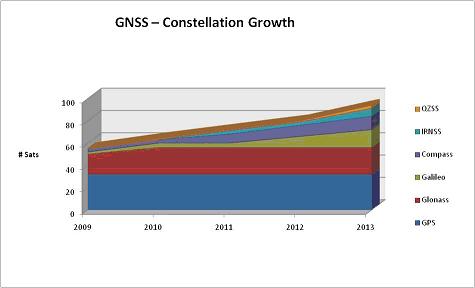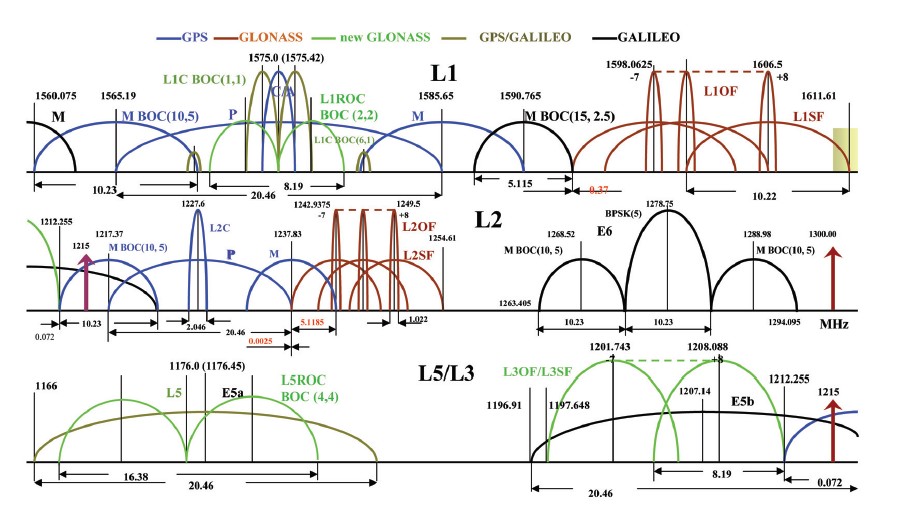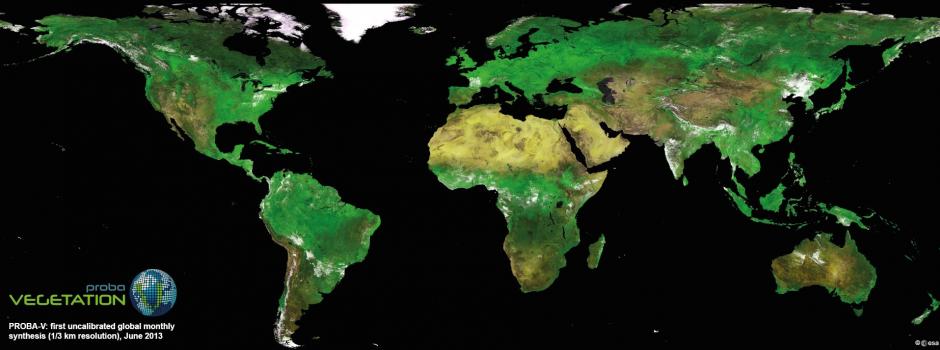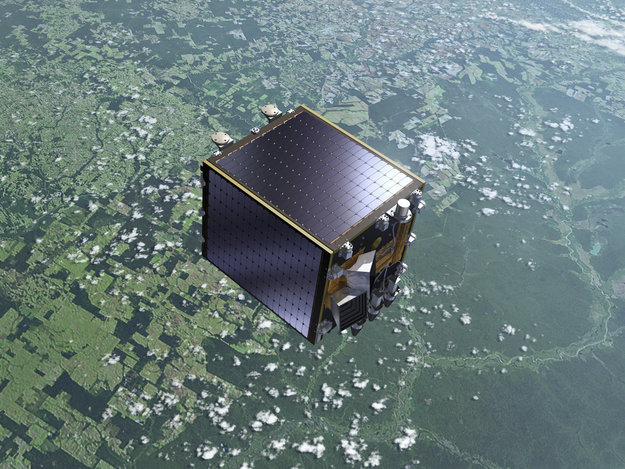Of late there has been significant interest in GLONASS and GNSS (Global Navigation Satellite Systems). The former because of the explosion of a russian rocket carrying several GLONASS satellites, the latter due to increase in the number of constellations that help navigate and locate. The latest in the ever increasing list of such Navigation Satellite Systems being India’s Regional Navigation Satellite System IRNSS that promises to be the local equivalent of GPS in India.

GNSS growth forecast. Image courtesy Government of Australia – Space department
Apart from all these new constellations, each day there are new technologies like Time and Inertial Measurement Unit (TIMU) from University of Michigan, GPStoo, etc that can be integrated along with the existing Satellite based positioning i.e. GNSS. These integrated positioning systems are capable of working even under jamming, help improve positioning accuracy and avoid total positioning blackout if GNSS satellite signals are unavailable for a short duration of time (like when we are driving inside a tunnel).
It has never been so good for GNSS! Does all this mean there will be better accuracy, integrity and availability ?
Well, yes but there are certain limitations. The diversity and redundancy provided by independent, compatible and (in some cases) interoperable GNSS systems brings a significant advantage in terms of availability and integrity in challenging urban environments and high multi-path areas where the best signals can be selected for positioning and the worst ones can be discarded and eliminated from the positioning algorithms. However there would be inherent limitations due to the fundamental design of GNSS and Integration systems. There is only so much we can do, beyond a point it’s just unwanted redundancy! The same is the case with Multiple constellations in GNSS.

GNSS signal overlap
Let me explain with an example: Multiple constellations means better signal diversity and redundant measurements but there would be limitations caused by the orbital height of these satellites. In GNSS positioning, the general rule of thumb – height accuracy is 1.5 times worse than horizontal positioning accuracy. Wondering why? Simple, the geometry of satellites on the lat-long divide is much better than the almost equidistant satellite elevation of 22000 kilometers of GNSS satellites which results in better horizontal accuracy than height accuracy and the fact remains that this is not going to change much even with multiple constellations!
Multiple Constellations is definitely a good thing but beyond a point, it’s not going to help much. I couldn’t it have said it better than the author at InsideGNSS
” Well, almost certainly. But as with many things in life and technology, the devil’s in the details. And, as the varied characteristics and design specifications of new GNSSes and regional systems become clearer, it may not be too early to sort out those details” SOURCE: InsideGNSS
If you are intrigued and want to understand better, here’s the link to a wonderful article by Inside GNSS on this topic.
Did you like this post? Read more and subscribe to our monthly newsletter!











